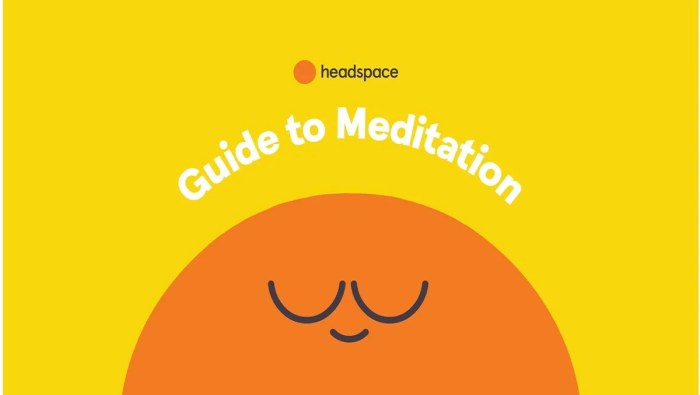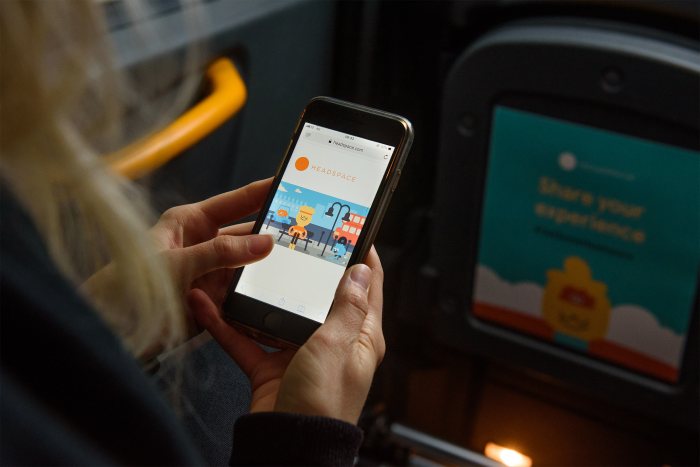Headspace brings meditation to Meta Quest, ushering in a new era of mindfulness that blends the power of technology with the ancient practice of meditation. This move marks a significant step forward for both the VR and meditation industries, offering a unique and immersive experience for users seeking inner peace and tranquility.
The integration of Headspace’s meditation app with the Meta Quest platform opens up a world of possibilities for individuals looking to explore the benefits of meditation in a virtual environment. By leveraging the power of virtual reality, Headspace aims to create a more engaging and accessible way to practice mindfulness, attracting a wider audience and potentially transforming the way people approach meditation.
The Appeal of VR Meditation
Meditation, a practice designed to cultivate mindfulness and inner peace, has been gaining popularity for its numerous mental and physical benefits. However, traditional meditation methods can sometimes be challenging for beginners, requiring significant effort to focus and maintain attention. Virtual Reality (VR) technology has emerged as a game-changer, offering an immersive and engaging approach to meditation that can make it more accessible and enjoyable.
Enhanced Immersion and Engagement
VR meditation leverages the power of immersive technology to transport users into serene virtual environments, effectively enhancing the meditation experience. By creating realistic and calming virtual settings, VR applications can help users escape distractions and focus on the present moment. These environments can range from tranquil forests and serene beaches to celestial landscapes and even guided journeys through the human body.
Benefits of VR Meditation
VR meditation offers several advantages over traditional methods, making it a compelling option for individuals seeking to enhance their mindfulness practice.
- Reduced Distractions: VR environments create a controlled and distraction-free space, allowing users to focus on their meditation without external interruptions. This is especially beneficial for individuals who struggle with maintaining focus in real-world settings.
- Enhanced Focus: The immersive nature of VR can significantly improve attention and concentration, making it easier to achieve a meditative state. The visual and auditory cues provided by VR applications can help guide users’ minds and maintain their focus on the present moment.
- Increased Accessibility: VR meditation can make meditation more accessible to individuals who might find traditional methods challenging. For example, people with anxiety or social anxiety may feel more comfortable meditating in a virtual environment, where they can control their surroundings and feel less exposed.
- Personalized Experiences: VR meditation applications often offer customizable settings and guided meditations tailored to individual needs and preferences. This allows users to personalize their experience and select the type of meditation that best suits their goals.
Target Audience for VR Meditation
VR meditation caters to a diverse audience, offering benefits for individuals at various stages of their mindfulness journey.
- Beginners: VR meditation can be a great starting point for individuals new to meditation. The immersive and guided nature of VR applications can make the practice more engaging and less intimidating.
- Experienced Meditators: Even experienced meditators can benefit from VR meditation. The immersive environments and personalized options offered by VR applications can provide fresh perspectives and enhance their existing practice.
- Individuals with Specific Needs: VR meditation can be particularly beneficial for individuals with certain conditions, such as anxiety, stress, or chronic pain. The calming environments and guided meditations offered by VR applications can help manage these conditions and promote overall well-being.
Headspace’s VR Features
Headspace VR on Meta Quest offers a unique and immersive experience for meditation and mindfulness, building upon the foundation of the traditional Headspace app. The VR app leverages the power of virtual reality to create a more engaging and interactive environment for users.
Key Features and Functionalities
Headspace VR offers a range of features designed to enhance the meditation experience:
- Immersive Environments: The VR app transports users to serene virtual environments, like a forest clearing or a tranquil beach, fostering a sense of calm and presence. These environments are designed to minimize distractions and enhance focus on the present moment.
- Guided Meditations: Headspace VR provides a selection of guided meditations led by Headspace instructors, similar to the traditional app. The VR app utilizes the immersive environment to create a more engaging experience, allowing users to feel more present in the meditation session.
- Interactive Elements: Some meditations in Headspace VR include interactive elements, such as manipulating objects in the virtual environment or interacting with animated characters. These interactive elements can help users stay engaged and present during their practice.
- Personalized Content: The VR app offers personalized content based on user preferences and progress, similar to the traditional app. Users can choose from a variety of meditations based on their goals, such as stress reduction, sleep improvement, or focus enhancement.
Comparison with Traditional Headspace App
The Headspace VR app shares core functionalities with the traditional app but introduces unique features enabled by virtual reality:
- Immersive Environment: The VR app offers a distinct advantage over the traditional app by creating an immersive environment that can help users disconnect from the physical world and focus on their meditation practice. The traditional app relies on audio-based guidance, while the VR app utilizes both audio and visual elements to create a more engaging experience.
- Interactive Elements: The VR app introduces interactive elements that are not available in the traditional app. These interactive elements can help users stay engaged and present during their meditation practice, particularly for individuals who find traditional meditation methods less engaging.
- Content Accessibility: While both apps offer a range of meditation content, the VR app may be more accessible to users who prefer visual guidance or find it difficult to focus on audio-only meditations. However, the traditional app remains a more convenient option for users who prefer to meditate while on the go or in situations where VR is not feasible.
Advantages and Disadvantages of Headspace in VR
| Advantages | Disadvantages |
|---|---|
| Provides an immersive and engaging experience | Requires a VR headset, limiting accessibility for users without one |
| Offers interactive elements that can enhance focus and engagement | May not be suitable for users who experience motion sickness or discomfort in VR environments |
| Can help users disconnect from distractions and focus on the present moment | May be less convenient for users who prefer to meditate on the go or in situations where VR is not feasible |
The Future of VR Meditation
VR meditation is still in its early stages, but its potential to transform mental well-being is immense. Imagine a world where you can escape the stresses of daily life and immerse yourself in serene virtual environments, guided by experienced meditation instructors. This future is closer than you think, and VR technology is rapidly evolving to make it even more accessible and impactful.
Advancements in VR Technology for Enhanced Meditation Experiences
VR technology is constantly evolving, and these advancements are poised to revolutionize the way we experience meditation. New technologies will enhance the immersive and interactive aspects of VR meditation, leading to deeper and more impactful experiences.
- Haptic Feedback: Imagine feeling the gentle touch of a breeze on your skin or the warmth of the sun as you meditate in a virtual forest. Haptic feedback will make these sensations real, adding another layer of realism to VR meditation experiences.
- Biometric Monitoring: VR headsets could integrate with wearable sensors to monitor your heart rate, breathing, and other physiological indicators. This data could be used to personalize your meditation sessions and provide real-time feedback on your progress.
- AI-Powered Meditation Guides: AI algorithms can analyze your biometric data and tailor meditation sessions to your specific needs. Imagine an AI guide that can adjust the length, intensity, and focus of your meditation based on your current state of mind.
Challenges and Opportunities for VR Meditation
VR meditation faces some challenges, but these obstacles also present opportunities for innovation and growth.
- Accessibility: The cost of VR headsets can be a barrier to entry for many people. However, as the technology becomes more affordable, VR meditation will become accessible to a wider audience.
- Privacy Concerns: VR meditation involves collecting data about your mental state and behavior. It is crucial to ensure that this data is handled responsibly and securely.
- Social Disconnect: VR meditation could potentially isolate individuals from real-world interactions. It is important to strike a balance between immersive experiences and social connection.
- Ethical Considerations: The use of VR for meditation raises ethical questions about the potential for manipulation and exploitation. It is important to establish clear guidelines and regulations to ensure that VR meditation is used responsibly.
Headspace’s Role in the Metaverse: Headspace Brings Meditation To Meta Quest
Headspace, a leading meditation app, has the potential to play a significant role in shaping the future of the metaverse. The metaverse, a network of persistent, shared, 3D virtual worlds, offers a unique opportunity for Headspace to expand its reach and enhance the mindfulness experience for users.
By integrating its VR app into the metaverse, Headspace can create immersive and engaging meditation experiences that go beyond traditional methods.
Headspace’s Potential to Promote Mindfulness in the Metaverse, Headspace brings meditation to meta quest
The metaverse, with its immersive nature, provides a fertile ground for promoting mindfulness. Headspace’s VR app can contribute to this by creating virtual environments that foster relaxation and tranquility. These environments could feature calming visuals, soothing soundscapes, and interactive elements that guide users through meditation practices.
For instance, users could find themselves in a serene forest, a tranquil beach, or a peaceful mountaintop, where they can engage in guided meditations tailored to their specific needs. The immersive nature of VR can help users disconnect from the distractions of the real world and fully immerse themselves in the present moment, fostering a deeper sense of mindfulness.
Headspace’s foray into VR meditation with the Meta Quest platform signifies a paradigm shift in the way we perceive and engage with mindfulness. This move not only expands the reach of meditation but also creates a more immersive and engaging experience for users, potentially revolutionizing the way we approach mental well-being. As VR technology continues to evolve, we can expect to see even more innovative and transformative approaches to meditation, ultimately making mindfulness more accessible and impactful for everyone.
Headspace bringing meditation to Meta Quest is a cool move, right? It’s all about making mindfulness more accessible. And speaking of accessibility, check out how Fairgen boosts survey results using synthetic data and AI-generated responses – it’s like magic for gathering insights! So, maybe Headspace could use Fairgen to understand how people are using their app on Meta Quest.
Imagine the possibilities!
 Standi Techno News
Standi Techno News

